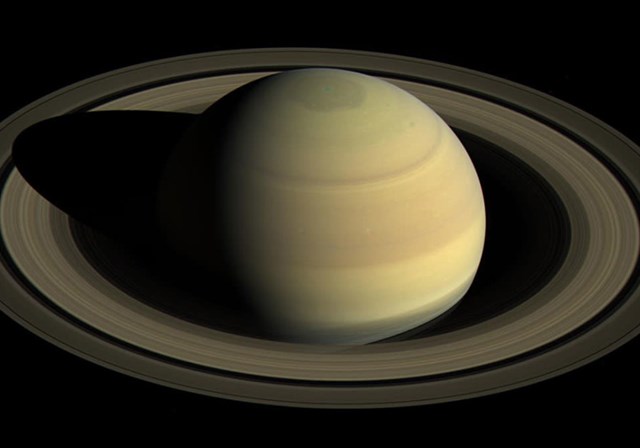
An image of Saturn taken by NASA's shuttle Cassini. (photo credit: NASA)
The rings of Saturn are very young, according to data obtained from NASA’s shuttle Cassini, which finished its mission in 2017. The last act of the spacecraft was titled “Grand Finale,” in which it circled the planet’s rings and atmosphere before bursting into flames.
Scientists examined final data from the spacecraft and concluded that Saturn’s rings are only 10-100 million years old – quite young compared to the history of our 4.5 billion-year-old solar system. In a revealing twist, that means that during the Jurassic and Triassic Period, when the earliest dinosaurs roamed the Earth – our night sky looked vastly different than it does today, without Saturn’s rings.
Prof. Yohai Kaspi and Dr. Eli Galanti of the Earth and Planetary Sciences Department of the Weizmann Institute of Science in Rehovot conducted one of the final studies of Cassini’s mission that helped scientists understand the depth of Saturn’s jet streams. Measuring up to 9,000 km. per hour, these winds are considered the strongest in our solar system. Along with researchers in the United States and Italy, the team was able to calculate the age of the planet’s rings, later publishing their findings in the popular research journal, Science.
The duo from Israel partnered with NASA’s Juno Science team, which had previously revealed the depth of Jupiter’s atmosphere. In this study, researchers believed they could use similar methods to examine Saturn’s atmosphere as well. Known as the gas giants, both planets have similar chemical and physical properties.
Kaspi explained the group’s technique.
“We detect small variations in the gravity field as the craft orbits Saturn, and translate these into the atmospheric wind that produces them,” he said. “There was no guarantee it would work for Saturn, as the gravity signal on Saturn is more difficult to interpret than what we had on Jupiter [since it is farther away]. We discovered that not only did it work for both planets, but that same physical process controls the depth of the flows on these two planets.”
To calculate the wind’s depths, the gravity measurements provided by Cassini were used with the model developed by the Israeli duo.
“We calculated that the depth of the atmosphere is up to around 9,000 km.,” Galanti added. “That is three times deeper than that of Jupiter. We also found that, just as on Jupiter, a strong internal magnetic field is what limits the depth of this layer of the atmosphere. Our theory ‘worked’ twice, which provides strong support for its validity.”
Originally launched in 1997, the shuttle traveled more than 1.2 billion km. to reach Saturn in 2004. It brought groundbreaking evidence of ice on Saturn’s moons and took pictures of the planet’s rings.
Although many planets have rings, Saturn’s are unique – composed of various layers of light and dark matter which correspond to the uneven loops of asteroids.
